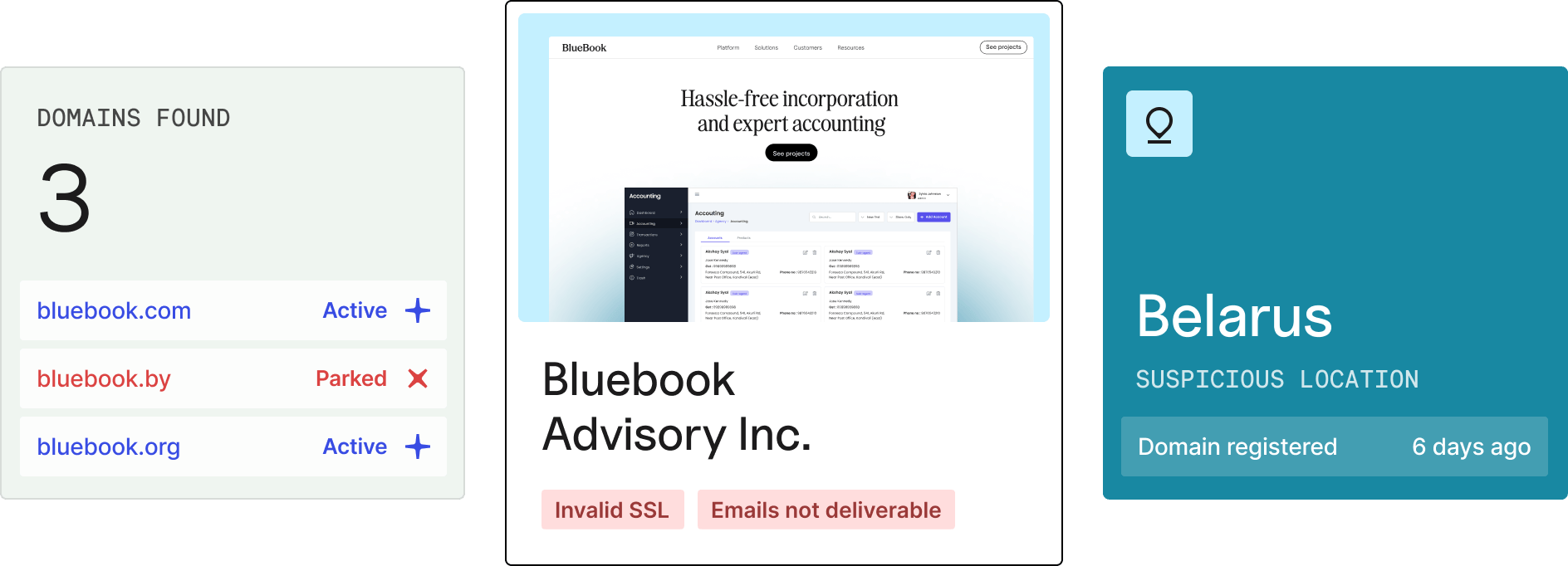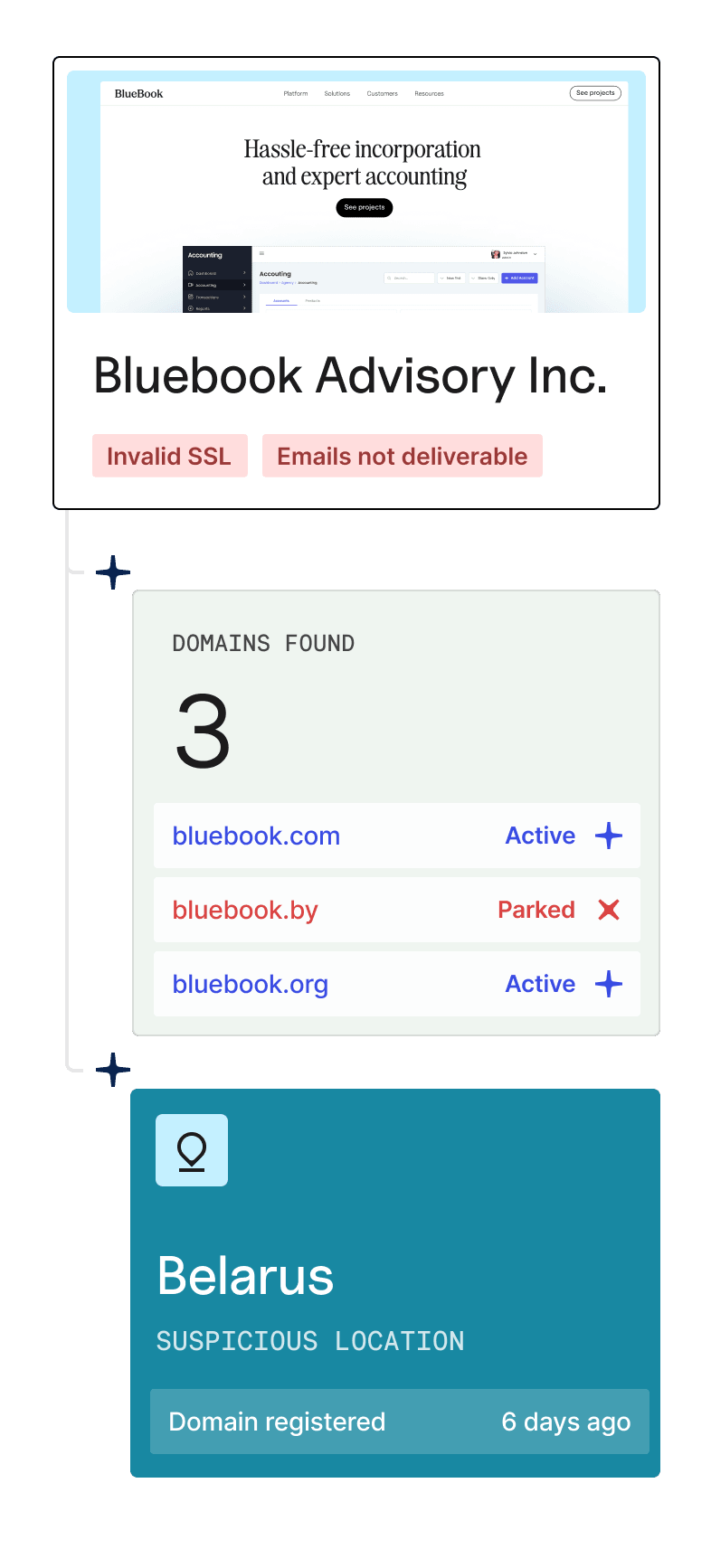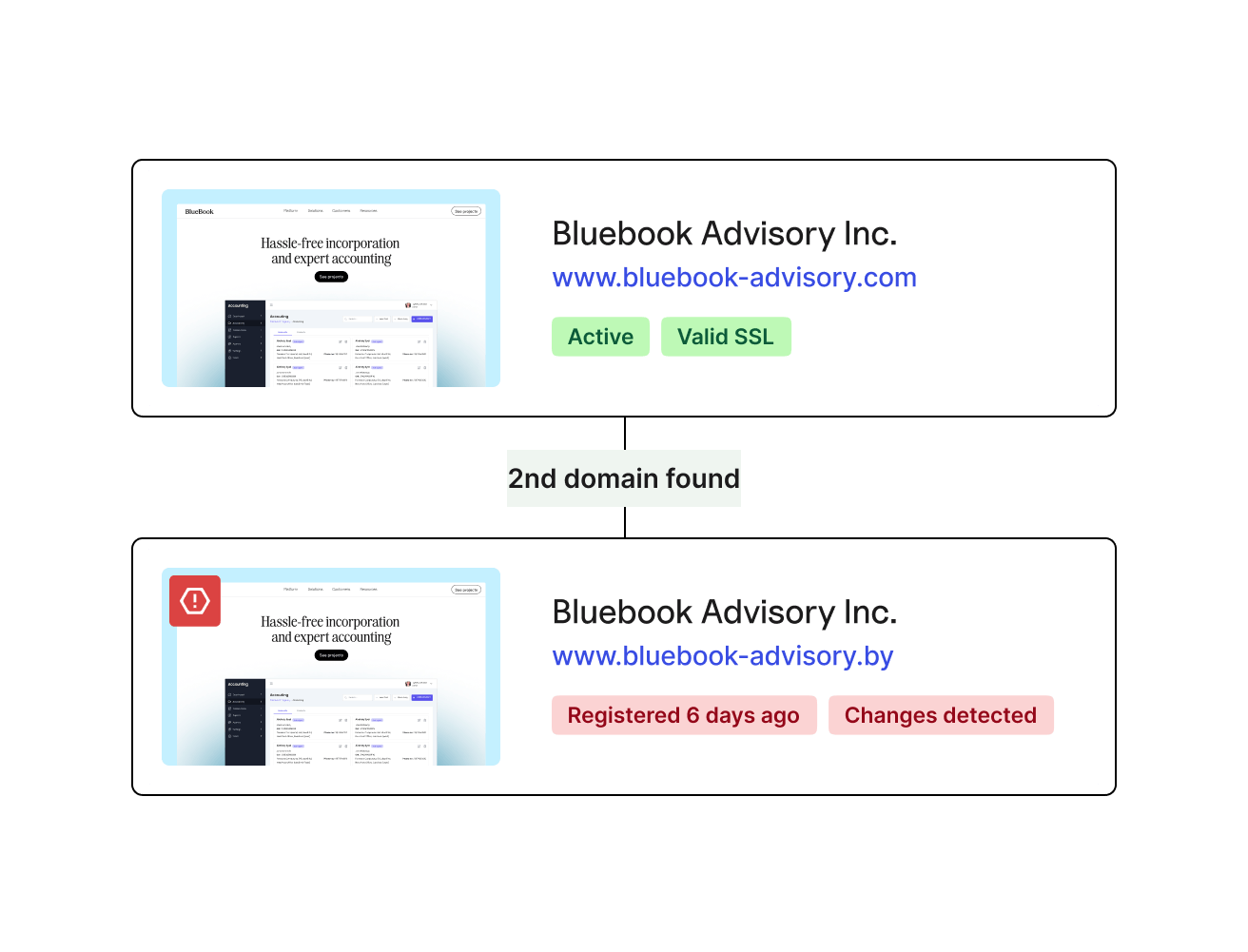Website Analysis
Uncover the digital footprint of who you’re doing business with
Baselayer scans a business’s online presence to help you verify legitimacy, predict intent, and catch synthetic risk before it onboards.
Trusted by 2,200+ industry-leading financial institutions
Fake domains are everywhere. But most KYB systems ignore digital presence entirely, creating risk blind spots and manual backlogs.
Stop relying on customer input to find the right website
Baselayer’s unique web presence review finds websites and social media presence without additional inputs.
Spot digital red flags instantly
Flag parked domains, bounced contact addresses, and metadata issues that signal spoofing or inactivity.


Stop synthetic business applications at the source
Identify newly registered or inactive domains, often a giveaway for fake or temporary entities.
Match officers and addresses automatically
AI-driven scraping matches officers and entity details with 30–40% higher accuracy than manual review.
Read more about web analysis
Review less. Decide faster.
Baselayer condenses thousands of signals, from traffic to content and metadata, into an actionable legitimacy score.

Catch subtle signs of fraud
Surface suspicious site structures, mismatched SSL certificates, or copied templates across known fraud networks.

Turn signals into smarter decisions
Product Managers
Credit & Underwriting Teams
Risk & Fraud Teams
Compliance Teams
Built for confident approvals
Baselayer connects fragmented data and applies AI to help you act early, and with more confidence.
Expand your digital and legal checks
Add litigation, lien, and behavioral scoring signals to complete your view of business legitimacy.
Liens (Searching & Filing)
Spot hidden claims before you approve.
Lawsuits & Bankruptcies
See legal risk before you approve.
Risk Rating
Summarize risk in a single score
Have questions? Find answers.
Baselayer Website Analysis is an automation tool that helps you verify business legitimacy by analyzing a company’s web presence including domain age, metadata, and traffic patterns. You can flag fake, inactive, or suspicious websites automatically without manual checks.
For e-commerce and newer businesses, a website is often the strongest proof they’re real and operating. Baselayer turns web data into structured insights so you can verify legitimacy, catch fraud, and approve trusted applicants faster.
Baselayer checks domain registration, site age, traffic, SSL status, email validity, and social media links. We match officers and addresses submitted in the application against what’s listed on the website to verify consistency. We also flag risks like parked pages or suspicious redirects. These automated checks go beyond what humans typically catch and ensure a consistent, reliable review every time.
If a business has a real website, Baselayer will find it. Our models outperform manual review by 30–40% on officer and address matches, catching spoofed domains, copied templates, and mismatched contact info.
You’ll get a detailed risk summary with signals like weak metadata or unusual domain activity. You can auto-flag suspicious cases for review or route them through enhanced verification checks based on your workflow.

